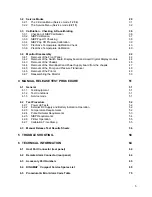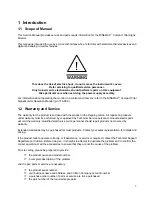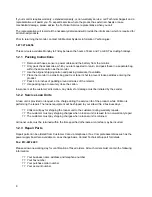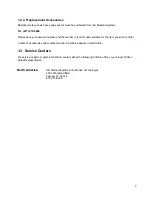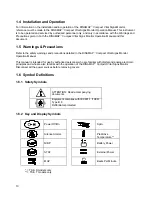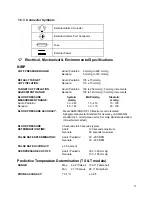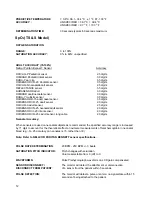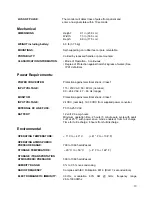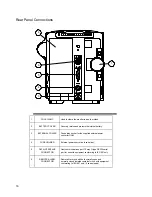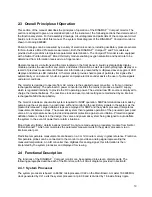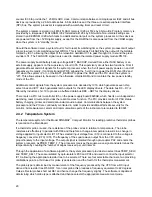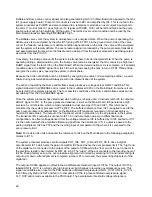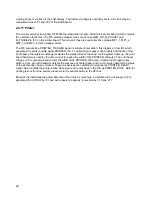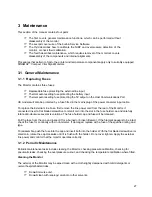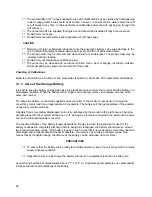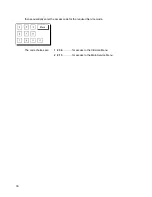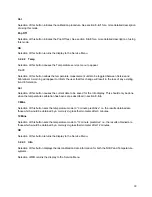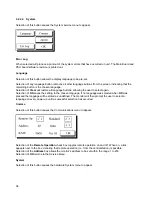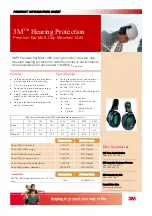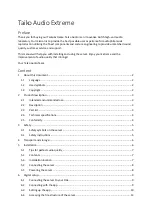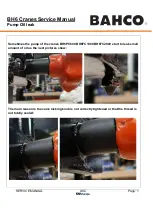
19
2.3 Overall Principles of Operation
This section of the manual describes the principles of operation of the DINAMAP
™
Compact
monitor. The
section is arranged to give an overall description of the instrument, the following sections then detail each of
the functional systems. For full assembly drawings, circuit diagrams and parts lists of the component circuit
boards, refer to section
8
of this manual. The system block diagram of the DINAMAP
™
Compact
monitor is
shown in drawing 8600EB.
Patient vital signs can be measured by a variety of electronic sensors, including oscillatory pressure sensors
for Non-Invasive Blood Pressure measurement. Both the DINAMAP
™
Compact
T and TS models are
provided with a predictive temperature parameter determination. The
Compact
TS model is also equipped
with a Nellcor Puritan Bennett
™
Blood Oximetry module enabling oxygen saturation and heart rate to be
determined from information received via a finger sensor.
Operator access is via buttons and the rotor located on the front panel. A liquid crystal graphics display
module provides the user with menu, alarm and status information as well as a plethysmograph display or a
record of previous measurements. Parameter information is presented by multiplexed seven segment LED
displays and discrete LED indicators. A thermal printer provides hard copies of patients vital signs either
automatically or on demand. A built-in speaker and piezo-electric sounder advise the user of pulse signals
and alarm conditions.
The monitor is designed to operate from AC mains via the supplied power converter, or from an internal
rechargeable battery. The external AC power converter rectifies the mains to produce a raw DC supply
which is regulated internally to provide the DC operating power. The external raw DC source is employed to
charge the internal batteries. The real time clock and user monitor settings are maintained by an internal
rechargeable NiCd backup battery.
The monitor includes a pneumatics system required for NIBP operation. NIBP determinations are made by
pumping up the air pressure in a restrictive cuff and monitoring the oscillatory signals in the system as the
pressure is released. Large deflation steps are employed for NIBP and the system processor interpolates
measurements between steps. The pneumatic system then regulates operation of the pneumatic pump and
valves. An overpressure sensor provides independent protection against over-inflation. Protection against
deflation failure is inherent in the design; the valve and pneumatic system being designed to auto-deflate
the system in the event of power fail or alarm situations.
Blood Oximetry (SpO
2
) determinations (model TS only) are made using a proprietary module from Nellcor
Puritan Bennett
™
, which communicates the parameter measurements to the system processor via an
internal serial port.
Predictive temperature measurements are based on a 3 or 12-minute mercury in glass reference. Predictive
Temperature probes can be connected to the monitor to provide an analog signal representing the
measured temperature. An A/D converter then digitizes this analog signal; this information is then
interpreted by the system processor and displayed for viewing.
2.4 Functional Description
The functions of the DINAMAP
™
Compact
monitor can be separated into eleven discrete parts. The
following paragraphs describe each of the Monitors, with full circuit diagrams provided in section
8
.
2.4.1 System Processor
The system processor is based on 68302 microprocessor IC22 on the Main Board. A master 19.6608 MHz
clock generated by XL1 exits the system processor at pin 98 and is divided by 16 inside binary ripple

